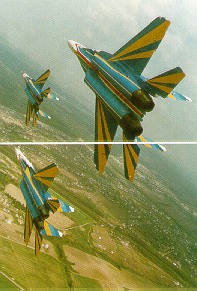Military AffairsUkrainian Armed Forces
The adoption of the Law and, consecutively, a whole package of other important documents on military matters, which specified the military policy of Ukraine for the near perspective, was crucially important and timely, because after the disintegration of the Soviet Union and proclamation of independence in 1991 Ukraine inherited one of the largest military forces not only in the post-socialist area, but in the entire Europe. The military arsenal of the force consisted of the force consisted of 6500 tanks, over 7000 armored combat vehicles, nearly 1500 combat aircraft, more than 1600 warheads of the intercontinental ballistic missiles etc. The military personnel totaled to 780,000 men. Maintenance of the mammoth military force, which was created to conduct strategic offensive operations, ran counter to the peaceful foreign policy of the young Ukrainian state, its non-alliance status and the defensive nature of its military doctrine. Hence, the first urgent task of the Ukrainian Ministry of Defense (MOD) was to optimize the organizational structure of the Armed Forces and other military formations, arrange the location of units according to new realities, develop programs of the construction of the Armed Forces of Ukraine. The decision of Ukraine on non-nuclear status and unilateral neutralization of its nuclear arsenal became unprecedented. Simultaneously, the conventional weapons were reduced too. These activities were conducted openly, in accordance with international treaties and under international verification. Thus, as far back as November 1995, Ukraine fulfilled its obligations and brought its armaments and equipment down to border limits as specified in the CFE Treaty. During 1992-1997 the Ukrainian Army was reduced by 400,000 servicemen. More than 1300 units, organizations, command and control installations were disbanded during that period. By the end of 1999 the organizational strength of the Armed Forces is to number around 400,000 men, including 310,000 military and 90,000 civilians. State Program for the Construction and Development of the Armed Forces of Ukraine
All these aspects were thoroughly considered in the "State Program for the Construction and Development of the Armed Forces of Ukraine up to the Period of 2005" which was approved by the Decree of the President of Ukraine on 20 January 1997. The State program determines:
The accomplishment of the Program activities is planned for nine years and is broken down into three phases:
The realization of the program is planned so that the major part of the activities will be accomplished during the first and second phases within four years. The Armed Forces of Ukraine are structurally organized into four armed services:
Land Forces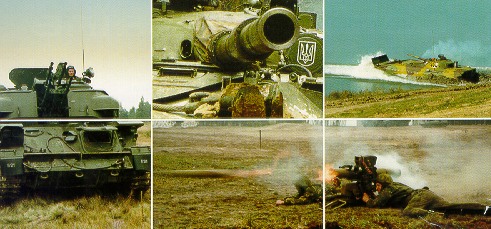
The legal basis for the creation of the new armed service was laid down by the Decree of the President of Ukraine "On the Land Forces of Ukraine" of May 1996. Under the Decree the Land Forces Command was established and the organizational structure of this armed service was developed. The Land Forces are composed of three Operational Commands:
The Land Forces are numerically the largest component of the Armed Forces. They make more than 50% of the overall strength of the Ukrainian Armed Forces. The Land Forces are equipped with T-62, T-64, T-72, T-80 battle tanks, BTR-60, BTR-70, BTR-80 armored personnel carriers, BMP-1, BMP-2, BMP-3, BMD-1, BMD-2 infantry fighting vehicles, cannons, mortars, helicopters, small arms and other weapons and systems. Air Force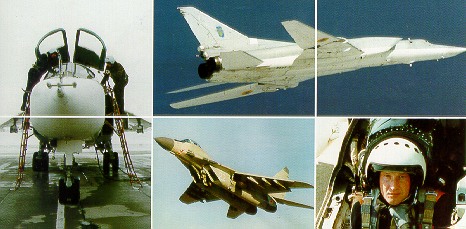
Ukrainian Air Force was created 17 March 1992 under the Directive of the Chief of the Main Staff of the Armed Forces of Ukraine. Within a short span of time a number of reorganizational activities were carried out to meet the requirements of the new military doctrine. The Air Force Command was organized on the basis of the 24th air army, headquarters in Vinnitsia. At that time, based on the territory of Ukraine were: 4 air armies, 10 air divisions, 49 air regiments, 11 separate air squadrons, educational, special institutions and facilities, about 600 military units having over 120,000 servicemen and 2800 aircraft. Currently, the Air Force of Ukraine includes five branches: fighter aviation, bomber aviation, assault aviation, reconnaissance aviation, transport aviation. They are organized into two air corps (L'viv and Odesa), separate divisions and training centers. The latter conduct research and development in the field of aircraft testing. The training centers for the personnel are the Kharkiv Institute for Pilots and Kyiv Air Force Institute. The strength of the Air Force is about 70,000 men. The main types of aircraft are: MiG-21, MiG-23, MiG-29, Su-17, Su-24, Su-25, Su-27, Tu-22, Tu-22m. Air Defense Forces
The Air Defense Forces organizationally consist of three corps headquarters in Lviv, Odesa, Dnipropetrovsk. The headquarters of the Air Defense Forces is located in Kyiv. The Air Defense Forces amount to 12% of the entire personnel of the Armed Forces. They have S-75, S-125, S-200, S-300 air defense missile systems and fighter aviation as their main armaments. The mission of the Air Defense Forces is to warn about an air or missile attack, fight the enemy air forces, defend key administrative, political, industrial areas and centers of the country, military and civilian installations, troops and forces against air and missile attacks.
The particular feature of the Air Defense Forces is that they carry out military missions on the protection of the state air borders of Ukraine even in peace time by conducting 24-hour combat duty. Units of the Air Defense Forces protect 7000 km long state air borders, monitor flights of aviation of all departments within the national air space limits and while crossing the state borders of nine neighboring states. The specialists for the Air Defense Forces are trained at Kharkiv Military University and training centers for junior specialists. More than 10,000 highly qualified servicemen in different specialties have been trained so far. Naval Forces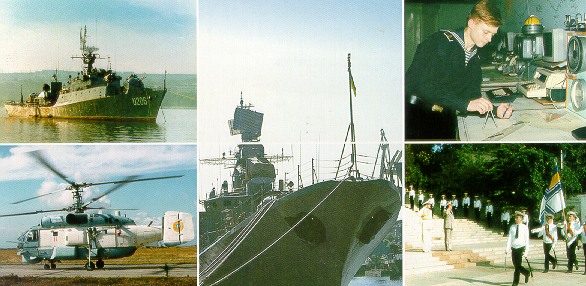
The creation of the national Navy began on 5 April 1992 with the Decree of the President of Ukraine "On Urgent Measures on the Construction of the Armed Forces of Ukraine", which made provision for the organization of the Ukrainian Naval Forces on the basis of the Black Sea Fleet, based in Ukraine. Ukrainian Naval Forces today include surface ships and submarines, naval aviation, coastal artillery and missiles, marines, other combat, service, special and technical support units. The Naval Forces have in the inventory bout 40 warships and auxiliary crafts, 60 planes and helicopters. The main base of the Ukrainian Navy is Sevastopil. The Ukrainian Naval Forces are also based in Odesa, Ochakiv, Chornomorsk, Novoozerne, Mykolaiv, Evpatoriia, Feodosiia. The personnel of the Ukrainian Navy make 4% of the Armed Forces. The headquarters of the Ukrainian Navy is located in Sevastopil. The mission of the Ukrainian Navy in peace time is to maintain constant combat readiness and perform combat duties for the protection of exclusive sea economic zone of Ukraine, combat terrorism at sea, participate in joint peacekeeping operations with the navies of other countries under the auspices of UN. |
![]()

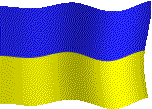
 The new history of the Ukrainian Armed Forces began on December 6, 1991, when the Verkhovna Rada (Parliament) of Ukraine passed the Law "On the Armed Forces of Ukraine". That act created legal basis for the organization of the armed forces of the independent state.
The new history of the Ukrainian Armed Forces began on December 6, 1991, when the Verkhovna Rada (Parliament) of Ukraine passed the Law "On the Armed Forces of Ukraine". That act created legal basis for the organization of the armed forces of the independent state. 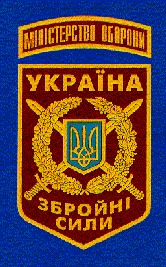 The Army of the future has to be small in size, mobile, well-equipped, capable of maintaining necessary level of combat readiness, taking into account the principle of defense efficiency, economic abilities of the country, maximum use of the current infrastructure in order to become the guarantor of the state's territorial integrity and independence.
The Army of the future has to be small in size, mobile, well-equipped, capable of maintaining necessary level of combat readiness, taking into account the principle of defense efficiency, economic abilities of the country, maximum use of the current infrastructure in order to become the guarantor of the state's territorial integrity and independence. 